1972 Was It a Good Year?
A Side-by-Side Comparison of Fender's 1972 Custom & Reissue

Was 1972 a special year for the Telecaster guitar? That question we will cover in detail and you can decide. However, Fender did come out with several new designs, making the Telecaster available with more options than ever before, coming out with new options like alder or ash bodies (depending on finish), “C”-shape maple necks, bullet truss rods, vintage hard-tail strings, through-body bridges, three-bolt neck plates with Fender's special “micro-tilt,” and with one “Wide Range” humbucking neck pickup (special design), and a traditional single-coil bridge pickup. These were some great new twists on the legendary, groundbreaking Telecaster guitar. Or were they?
By 1951, Leo Fender introduced the prototype solid-body guitar looking and sounding different than any guitar ever made to that date. It was called the “Broadcaster,” later re-named to the Telecaster guitar (or the popular nickname "The Tele"). It became the first solid-body electric “Spanish-style” guitar to ever go into commercial mass production. It has been said by many that, with all Leo Fenders inventions in manufacturing, Leo became the Henry Ford of musical instruments!
Some Telecaster Guitarists
- Buck Owens
- Steve Cropper
- Eric Clapton
- Jimmy Page
- Luther Perkins
- Jimmy Wyble
- Charlie Aldrich
- Jimmy Bryant
- Roy Watkins
- Bill Carson
- Merle Haggard
- Waylon Jennings
- James Burton
- Muddy Waters
- B.B. King
- Clarence “Gatemouth” Brown
- Roy Buchanan
- Pete Townshend
- Syd Barrett (Pink Floyd)
- Clarence White (the Byrds)
- Albert Lee
- Keith Richards
- George Harrison
- Joe Strummer
- Ritchie Kotzen (Winery Dogs, Mr. Big, Poison)
- Danny Gatton
- Andy Summers (the Police)
- Steve Howe (Yes)
- Mike Stern (jazz guitarist)
- Chrissie Hynde (Pretenders)
- Graham Coxon (Blur)
- Jonny Greenwood (Radiohead)
- Steve Morse (Dixie Dregs)
- Albert Collins
- Russell Willaford
- Barney Kessel
- Howard Roberts
- Tommy Tedesco
- Jeff Beck
- Vince Gill
- Keith Urban
- Mark R Darnell
The 1972 Tele Custom
The year 1971 took the ground-breaking Telecaster guitar to a whole new level, resulting in what some called "the ultimate hybrid guitar," crossing the popular electronics styling of the Gibson Les Paul with the Fender Telecaster by pairing a single-coil Telecaster bridge pickup with a Humbucker pickup specially designed for Fender. The body and neck were 100 percent standard Fender but adding the twist, four individual controls (2-volume and 2-tone) and a 3-way toggle switch that are obliviously "influenced" by Gibson Les Paul features. But other new additions were the three-bolt Micro Tilt neck and bullet truss rod that had already been found on the Fender Stratocaster and other "top of the line" Fender guitars. Not until 1972 had this ever been seen on a Tele. The '72 Custom was also offered with a rosewood or maple fret board options. So this must have been a guitar everybody wanted… right?
Well… not exactly… Here are some reasons why. For one thing, guitarists like Jimmy Page (Led Zeppelin) Tomi Lomi (Black Sabbath) and even Angus Young (AC/DC) were enjoying huge popularity with the rise of stadium power rock bands during the early 70s. And their main sound… or axe of choice was usually a Gibson! With that Famous PAF Humbucker sound!
Gibson guitars were drawing a strong following in the hard rock and roll market. Early 1970s Gibson Les-Paul Customs were everywhere. So needless to say neither the Gibson fans nor the established tried and true Fender players picked up on Fender's '72 Custom humbucking Tele’s. In Addition to that, it’s not a secret that CBS's (they bought the Fender company from Leo Fender) was rapidly declining in quality and helped fuel people's dissatisfaction or lack of interest with the Tele Custom as with the rest of the 70s Fender line. Rumor has that it was Keith Richards and Mike Bloomfield who had helped influence the Custom design by putting a Gibson Humbucker on their own standard Telecasters neck position.
In the U.K., Keith Richards bought butterscotch 1953 Telecaster in 1971 which soon became his number-one instrument for many years and after. He made a few of his own modifications, including the backwards installation of a "PAF" Gibson humbucking pickup at the neck, a six-saddle bridge with the low-E saddle removed to accommodate his preference for a five-string open-G tuning and a white Stratocaster-style switch tip in place of the original “barrel” tip.
Keith Richards has been seen in many photos with a normal looking Tele with a Humbucker installed in it. But he also is seen using the 1972 Telecaster custom too. Not until the re-issues that came out in 1999, made in Mexico, has there been a re-interest in the guitar playing public, including myself, for the Fender Tele Custom. So from here on out, I will deal with the differences between a real 1972 Tele Custom (vintage) which I owned and the 1972 Tele Custom “Reissue” which I did own for about three weeks until I bought my vintage one off E-bay. More about that later…
1972 Tele Custom 'Reissue' (Non-Vintage)
So I got the fever, I had to have one, and I couldn’t wait. So I went to my local Fender Dealer to try the “re-issued” version of the Tele Custom. Actually, I called ahead and talked to my friend Barry and asked him if they had any. He said yes but not any on the shelf. He’d have to go out to the warehouse and get one for me. I said, “Do it! I’ll be there in a half hour.” So sure enough he did and had it waiting for me. I proceeded to put it through the paces. As always, I plugged it into a Fender Blues Junior, all-tube guitar amp.
Just for fun, I even tried it up against many other Fender Telecaster Standards that were there too, but I already had a well-educated reference of what a good American made Telecaster should sound like because six to eight months beforehand I had gone through an exhausting search for good American Telecasters. That will be the next review.
So after checking the finish, construction, and overall build quality, I was very impressed. It was a very solid feeling and well-playing guitar. It sounded great! I loved the difference the Fender “specially designed” Humbucker gave to the old “groundbreaking” Tele sound. The neck (Humbucker pickup) sounded very warm and had a smooth bluesy/Jazz box vibe to it, hotter and warmer than a standard Tele single coil neck pickup, while the single coil bridge had that familiar punchy snappy bite to it as a good Tele should. The middle “in-between” setting was interesting...
Not like a standard Tele and not like a Les-Paul but something of a “hybrid” for sure. So I was smitten and bought it on the spot. The only thing that was bugging me was that this guitar is made in Mexico. In the past the foreign made Fender guitars from Korea, Indonesia, and Mexico were very cheaply made and bad playing and sounding guitars. Note, ten years ago a friend had me “sit in” with his band for a couple songs and he handed me his “Mexican made” Telecaster to use… It was horrible. Thus, not the case with this 1972 Tele Custom “reissue” this time.
I also didn’t mention that all my Fenders and Gibsons I buy for professional use are usually “American made,” I guess mostly because of the stigma and definitely because of the “resale” value. I feel if I’m going to invest in something like a guitar, in this case, it better be worth more to me in the years to come. So with that said I got over it being made in Mexico, being totally impressed with the quality and sound… Plus, new it was only about $485 versus $1000- $2800 for the used vintage ones going on E-bay… sigh… and not knowing what you're getting.
Live in Action
I took it home, plugged it into a few other tried and true amps like my Fender 65 Twin Verb and my Marshall DSL 401 combo amps. So as expected it passed all my tone test/amp combinations and sounded really good. I felt good about my purchase… sort of… but it was still bugging me that it said “Made in Mexico” on it. I put it away for about a week and didn’t get it out until my next gig. I took it and used it off/on through the whole gig. It did a great job covering all styles that we cover. Everything from Marvin Gaye’s “What’s Going On” to blues stuff like “Before you accuse me” by Eric Clapton and “I Feel Good” by James Brown. So after the gig, I put it away in the guitar rack with all my other “American made” guitars—well can you guess where I’m going with this next? Those of you who know me, you probably can guess.
I started to dig deeper into research about the “original” 1972 Tele Custom, finding most the info I gave you in the beginning of this review. I started searching E-bay for them… them???… Yeah, a real one—a vintage 1972 Telecaster Custom. And as you can guess, I started bidding on a few; in short, I won one for $992.00 “all American dollars” a vintage 1972 Telecaster Custom in good shape, all original (except for a added phase reverse pickup tap switch) from a guy in Texas! Ok, you read through all of that to get to this… the meat and potatoes of this review.
1972 Telecaster Custom (Vintage) vs. 1972 Tele Custom 'Reissue'
Actually, there are three versions of this same guitar made out there from Fender. From 1972 to early 1981 you can find a real one made in the USA. It was considered for about nine years to be “discontinued.” In 1990 Fender re-issued them being made from Japan. These continued until 1999. They then changed where they were being made, from Japan to Mexico and that same year are still in current production as of today as a “Mexican made” re-issue. I’m not really sure if you can actually get an American one made today, but I'd bet if you called Fenders custom shop, for the right amount of “American made money,” they’d make you one.
Anyway since there are three differently made ones, I’m only going to cover the two I have owned and have knowledge and experience with. Besides, those of you who have read my reviews know I only review and rate products based on #1 me owning and using them, #2 borrowing and using them.
A Side-by-Side Comparison (Things I Like and Dislike)
The Body—From this point out I will refer to my Vintage American Tele Custom as VATC and the Mexican Reissue Tele Custom as MRTC. The body of VATC is made of ASH wood. The MRTC body is made of Alder wood. Thus my VATC is lighter in weight than the MRTC. I actually like the Mexican Reissue feel of the body better than my Vintage American Tele. Alder weighs more than Ash, so I like the heavier feel. Once again the perception of thinking heavier means better. But that’s not always the case. But I do like heavy guitars; they just feel better and solid.
2. The Neck—The neck on my VATC is a “c” shape maple neck. I hate “C” shape necks although the radius at the first fret is the same as the MRTC (1.650” or 42mm) the MRTC is a “U” shape neck, which I like much better. It just feels and plays better in my big hands. Feels much like a standard Strat or Tele neck. I have a real hard time playing my Vintage American Tele Custom because of this main issue. It’s hard to grip the strings and bend doing blues/rock licks. Plus I usually don’t like the high gloss feel of vintage maple necks—they are too slick. I would guess that this was a reason other players from that time didn’t warm up to them then, and also why Fender has changed the neck to a U shape and more of a satin feel on the MRTC! At the time, I was actually debating on buying a Tele Replacement “U” shape maple neck to replace the original neck that I didn't like… and of course just “store” it until it’s time to put it back to original condition.
3. The Tuning Machines—The tuning machines or “tuners” on the VATC are standard Fender/Schaller “F” tuners. They still work fine and for the most part, the guitar stays in tune. The tuning machines or “tuners” on the MRTC are called Fender/Schaller “F” style tuners but are slightly different than the original with a narrower string slot. Regardless they work just as good as or better than the original.
4. The Color Options vs Wood—The VATC comes in Black, Olympic White, Natural Blond, Walnut, Antigua, Wine, and Tobacco Sunburst. The MRTC only comes in 3-tone Sunburst and Black. SPECIAL NOTE: The MRTC 3-tone Sunburst comes with an Alder wood body and the Black version comes with a Poplar wood body. As far as I know, the VATC comes in Ash wood and Alder, but I don’t know how to tell by just looking at the finishes.
5. Last but not least are the pickups and the tone.—As I said earlier the MRTC actually sounded really good. In fact, when tested up against the new American standard Tele’s, it sounded just as good or even better! BUT not until I got my VATC would I have known the difference. By far… hands down… with no argument, my Vintage American Tele Custom with its vintage/original pickups sounded way better. They seem to have an open ended airiness to them where the MRTC kind-of sounded a little flat and sterile. The “middle/in-between” setting on my Vintage American Tele Custom has a fuller “chimney-jangle” zing to where the Mexican Reissue Tele Custom just is kind-of… just ok.
In general, the VATC has an overall air, tone, and "vibe" that over 40 or more of aging brings out, that you just can't package in a “re-issue” guitar of any make and model. That’s another article I’ll have to write about later.
Conclusion
In short the Fender Telecaster Custom “Re-Issue” made in Mexico is one fine guitar. Not only is it a very close copy of the real thing that came out over 40 years ago, it actually plays much better than my Vintage Custom, but it falls short in overall sound and vibe. But to be totally fair, unless you have a vintage one, like I do, to compare it to, you won’t know the difference, somewhat like the young people of today have no comparison or reference to how good analog & vinyl records and a good Hi-F- system with a good needle stylus sounds. This is so much better than those MP3-s and I-pods they are walking around with today.
But for the money, you won’t be unhappy with how the re-issued version of the Fender Telecaster Custom plays and sounds.
Thanks for reading
Mark Darnell
Groovebelly Productions
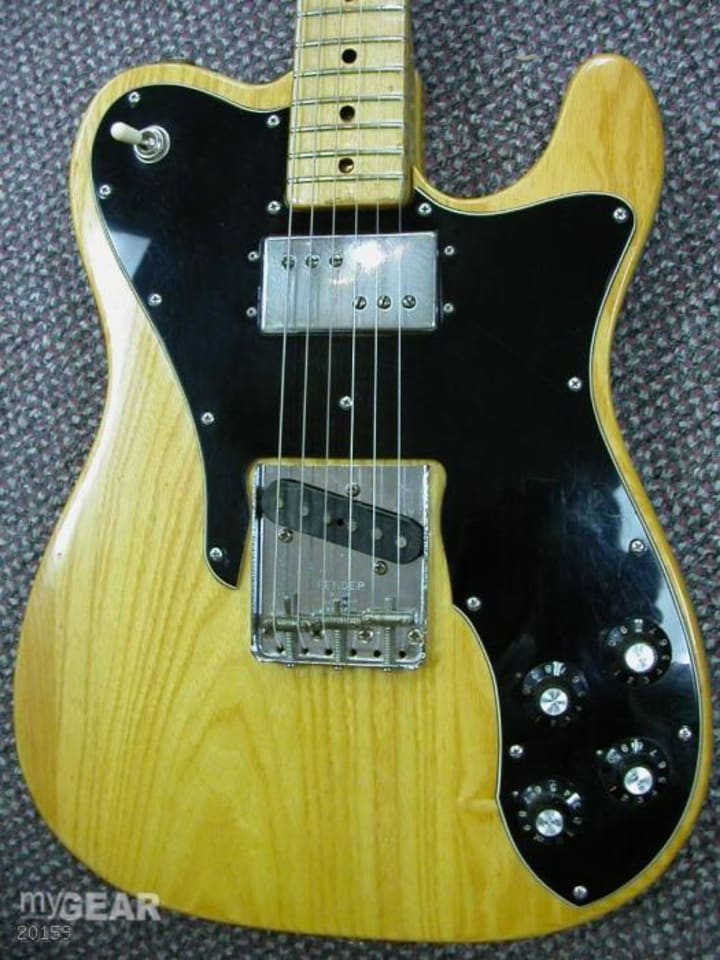




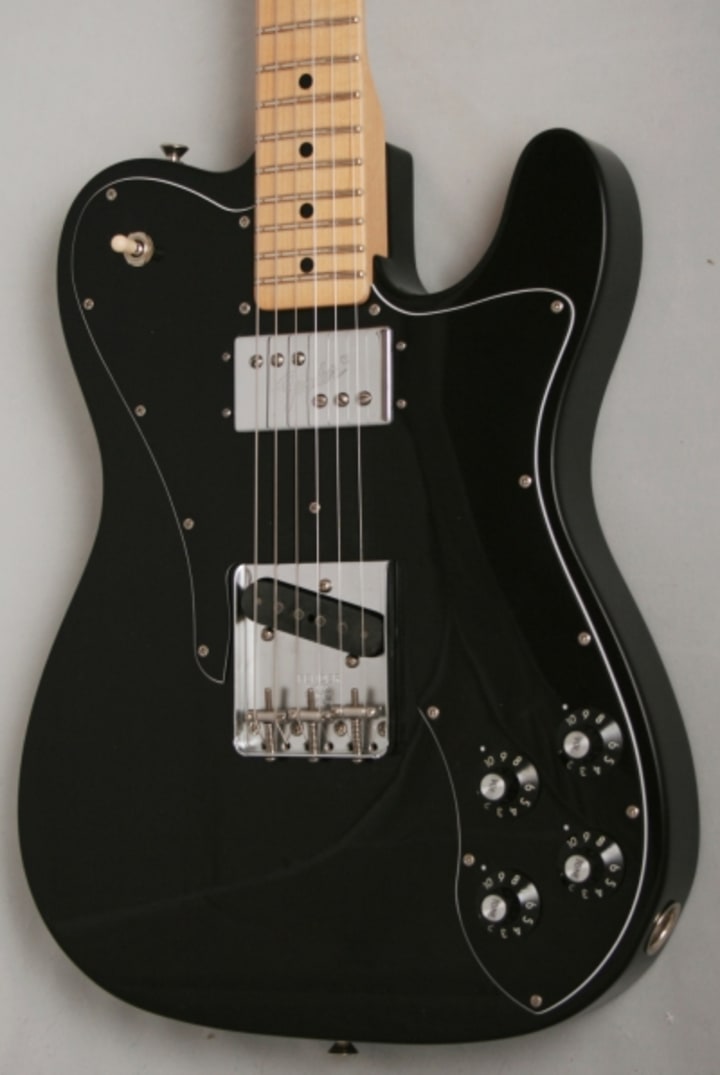
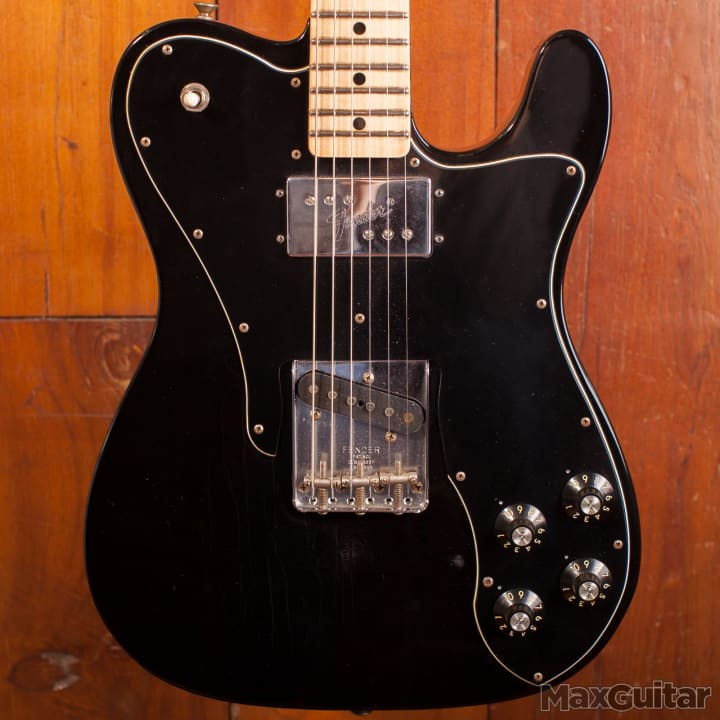

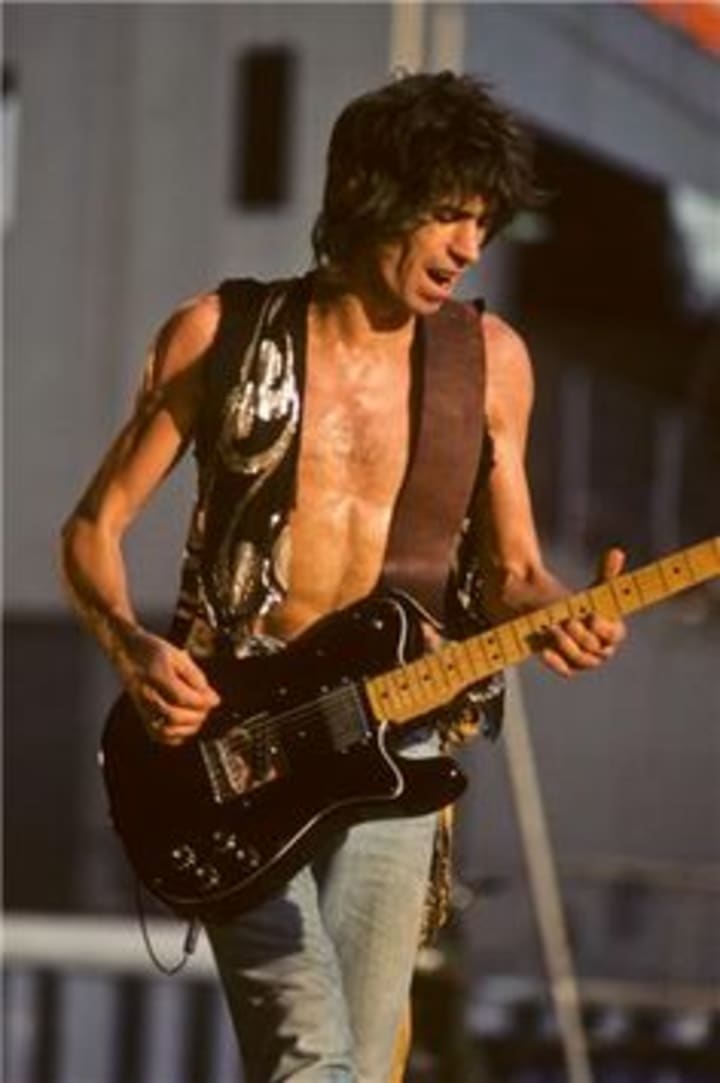


About the Creator
Mark Darnell
Mark R Darnell started music on trumpet at 10 and Guitar/Bass/Drums at 12. After returning home from Anderson University studying music Industry and Performance has been playing in the Michiana music scene for over 38 years. Nashville too.


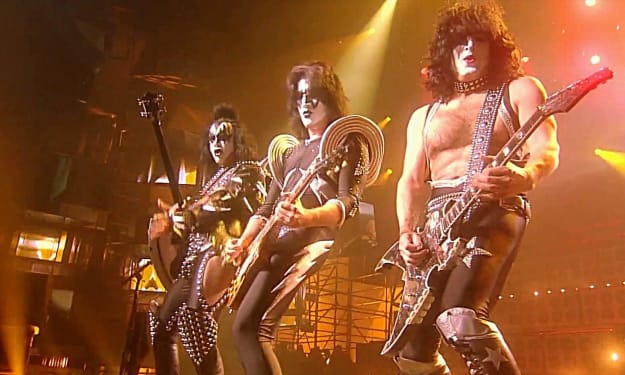



Comments
There are no comments for this story
Be the first to respond and start the conversation.